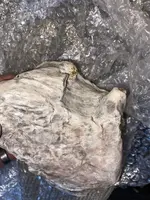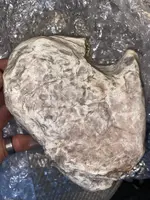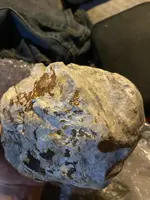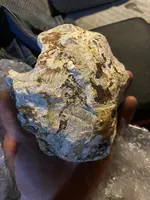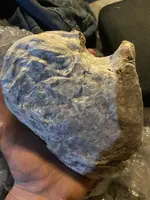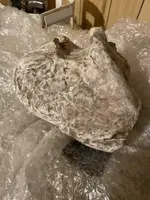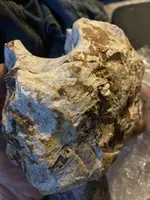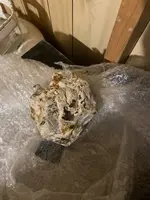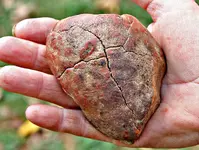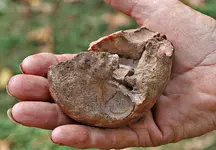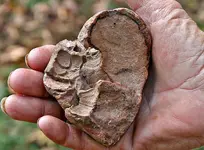You are using an out of date browser. It may not display this or other websites correctly.
You should upgrade or use an alternative browser.
You should upgrade or use an alternative browser.
Fossilised heart ( human???)
- Thread starter Ajkingdom8787
- Start date
Kray Gelder
Gold Member
- Joined
- Feb 24, 2017
- Messages
- 7,005
- Reaction score
- 12,558
- Golden Thread
- 0
- Location
- Georgetown, SC
- Detector(s) used
- Fisher F75
- Primary Interest:
- Metal Detecting
Looks like this?

GlowingArtist
Sr. Member
Since am Sure humans weren't playing with hearts over 100 years back... bet it is that dino do do, or the replaced sediments that create the shape.
Around 3000 BCE, ancient Egyptians were one of the first civilizations to practice the removal and examination of the internal organs of humans in the religious practice of mummification.Since am Sure humans weren't playing with hearts over 100 years back... bet it is that dino do do, or the replaced sediments that create the shape.
creskol
Gold Member
ah hahhh .. so THEY are the ones responsible for heart "attacks."Around 3000 BCE, ancient Egyptians were one of the first civilizations to practice the removal and examination of the internal organs of humans in the religious practice of mummification.
In 44 BCE, Julius Caesar was the subject of an official autopsy after his murder by rival senators, the physician's report noting that the second stab wound Caesar received was the fatal one Julius Caesar had been stabbed a total of 23 times. By around 150 BCE, ancient Roman legal practice had established clear parameters for autopsies.
Though an autopsy and playing the hearts (100 yrs ago)are two separate things.
Playing with the heart strings is a whole different matter also.
Though an autopsy and playing the hearts (100 yrs ago)are two separate things.
Playing with the heart strings is a whole different matter also.
river roamer
Bronze Member
- Joined
- Dec 9, 2022
- Messages
- 1,025
- Reaction score
- 1,576
- Golden Thread
- 0
- Location
- East Coast
- Detector(s) used
- Excalibur II Excalibur 1000 Equinox 900
- Primary Interest:
- Beach & Shallow Water Hunting
Interesting find
- Joined
- Dec 23, 2019
- Messages
- 6,324
- Reaction score
- 20,201
- Golden Thread
- 0
- Location
- Surrey, UK
- Primary Interest:
- All Treasure Hunting
Images of the hearts of various mammals have been created for around 30,000 years. The earliest known representation, recognisable by shape and anatomical location, is depicted in the mammoth or elephant painting in the Palaeolithic El Pindal Cave in Spain. Egyptian hieroglyphs from around 2,000BC include a heart depiction but it isn’t known if the glyph derives from a human heart or a bull. The oldest surviving depiction of a human heart with anatomical detail comes from the Olmec as an effigy vessel in the shape of a human heart (c900-1,200BC). The vessel has discernible features including a pulmonary artery, aorta, superior vena cava, interventricular succus and two ventricles. [Bendersky, 1997].
- Joined
- Dec 23, 2019
- Messages
- 6,324
- Reaction score
- 20,201
- Golden Thread
- 0
- Location
- Surrey, UK
- Primary Interest:
- All Treasure Hunting
Welcome to Tnet.
You have a very vivid imagination. I don’t know what that is, but it’s not a fossilised heart, whether human or otherwise. Fossil soft tissue in 3D requires some very special circumstances of preservation and is an extremely rare find. Perhaps you could tell us where you found this and say or show what fossils were found in association with it, to help determine its palaeontological age… if indeed it is actually a fossil. The earliest hominins don’t go back much more than about 4.2 million years (in Africa); anatomically modern humans have a much shorter history, and shorter still in the Americas.
The most common fossils mistaken for hearts are usually heart-shaped clams from the genus Protocardia (commonly from the Creatcaceous of Texas), but it doesn’t appear to be a clam from what I can see in your pictures.
You have a very vivid imagination. I don’t know what that is, but it’s not a fossilised heart, whether human or otherwise. Fossil soft tissue in 3D requires some very special circumstances of preservation and is an extremely rare find. Perhaps you could tell us where you found this and say or show what fossils were found in association with it, to help determine its palaeontological age… if indeed it is actually a fossil. The earliest hominins don’t go back much more than about 4.2 million years (in Africa); anatomically modern humans have a much shorter history, and shorter still in the Americas.
The most common fossils mistaken for hearts are usually heart-shaped clams from the genus Protocardia (commonly from the Creatcaceous of Texas), but it doesn’t appear to be a clam from what I can see in your pictures.
GlowingArtist
Sr. Member
I mean medically able to do surgery and such. I know about Egyptian history.Around 3000 BCE, ancient Egyptians were one of the first civilizations to practice the removal and examination of the internal organs of humans in the religious practice of mummification.
GlowingArtist
Sr. Member
On second glance it looks s lot like modern cement to me. And has rounded groves, for stop sign like poles go into(were formed around,,).
jgoetz4
Full Member
- Joined
- Dec 31, 2014
- Messages
- 124
- Reaction score
- 197
- Golden Thread
- 0
- Location
- Baltimore, Md
- Detector(s) used
- White's 5000D (40 yrs) and Bounty Hunter 3300 (8 yrs)
- Primary Interest:
- Other
Similar threads
- Replies
- 11
- Views
- 320
- Replies
- 9
- Views
- 459
- Replies
- 11
- Views
- 1K
Users who are viewing this thread
Total: 1 (members: 0, guests: 1)

